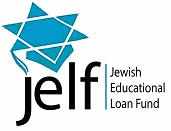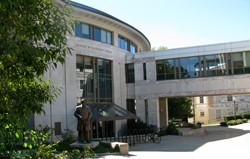 132 year old Jewish service organization with a new executive director wanted a new strategic plan that really stretched the organization to do “more.” Based on input from a full range of stakeholders – the board, staff, partner agencies, donors, and clients – the resulting 4-year plan expanded programming and shifted the board’s focus from the program to fundraising. The plan has served as a template for all aspects of running the organization. In the first two years they achieved 50% of their fundraising goal and most of the programmatic goals
132 year old Jewish service organization with a new executive director wanted a new strategic plan that really stretched the organization to do “more.” Based on input from a full range of stakeholders – the board, staff, partner agencies, donors, and clients – the resulting 4-year plan expanded programming and shifted the board’s focus from the program to fundraising. The plan has served as a template for all aspects of running the organization. In the first two years they achieved 50% of their fundraising goal and most of the programmatic goals
Strategic Plan Drives Program Integration, New Partnerships and New Funding
The new executive director of a refugee services agency needed to develop a new strategic plan during a tough economic environment. More than 50% of the staff had come onboard after the last plan was developed, and most had no previous planning experience. The goal was to be more aspirational, yet scalable so that the strategic directions could remain relevant across various economic conditions. We designed and facilitated a highly interactive process led by the senior leaders which would engage all staff members. Input was gathered from the board, staff, funders, strategic partners, and clients. The plan articulated a comprehensive set of desired outcomes, a clear theory of change, comprehensive strategies, and related actions to achieve those outcomes – including program integration and inter-agency partnerships. The plan, which resulted in a high degree of buy-in from board and staff, and favorable feedback from donors, was an excellent tool for fundraising.
Superior Financial Results Come from Culture Change and Business Process Improvement

A manufacturing company ranked #1 in its industry in both manufacturing costs and production effectiveness. The president was under pressure to continue to reduce costs by 5% annually, beyond “plan.” Convinced there were significant opportunities for cost savings, cycle time reduction, and increased effectiveness within their administrative processes, he had been unsuccessful in gaining interest from his senior team.
This is a common obstacle when the senior leader of an organization sees the need to change but is unsuccessful in “convincing” his/her team. Our approach is different. We don’t try to convince people, we create processes that allow them to convince, or see for themselves.
The first thing we did was design and facilitate a meeting of the senior leadership team, giving them an opportunity to share their plans and the estimated savings. Looking at the possibilities all together, the team was able to see what the president already saw: that they were not going to reach the 5-year plan without making significant changes in manufacturing and administrative processes. They realized they had to do something more. We asked them to identify the key administrative processes, focusing on those which crossed functional or departmental lines, because it’s usually at those boundaries where the biggest opportunities lie. [Read more…]
Customer Satisfaction Survey Results Drive System-Wide Improvements
A new planning manager of BP’s Pipeline Engineering & Maintenance Department needed to improve the quality of programs and program management across North America. There was no mechanism in place to understand the perception of program effectiveness, the impact across the system, or customer satisfaction. We designed, administered, and analyzed the results for two custom surveys including quantitative and qualitative feedback – one to measure customer satisfaction across 13 distinct programs, and a self assessment for the program managers. 278 responses were received from across field and headquarters customers – a 65% response rate. The report we developed simplified a set of complex data, making it understandable and actionable. Data analysis for individual programs and across the system highlighted: 1) best practices in communication and engagement which were adopted across the entire system; and 2) a need for clearer scheduling, which resulted in the development of an integrated program calendar. These changes led to improved communication across the entire system.
A Prestigious University Library Breaks Through a Longstanding Stalemate
 For 4 years, and after engaging 6 different consultants our client had been unsuccessful in implementing a widespread organizational change to improve customer and employee satisfaction. We were engaged to coax this effort across the finish line. After understanding where this change effort “stuck,” we were able to design and facilitate successful completion of the organization-wide redesign. The work involved developing a new organizational structure agreeable to both leaders and staff, establishing new roles and responsibilities to reflect a new culture, and implementing the staffing, team development, evaluation, and rewards processes to execute the new organization design. We developed the client’s internal capacity to manage change. And they were able to implement effectively.
For 4 years, and after engaging 6 different consultants our client had been unsuccessful in implementing a widespread organizational change to improve customer and employee satisfaction. We were engaged to coax this effort across the finish line. After understanding where this change effort “stuck,” we were able to design and facilitate successful completion of the organization-wide redesign. The work involved developing a new organizational structure agreeable to both leaders and staff, establishing new roles and responsibilities to reflect a new culture, and implementing the staffing, team development, evaluation, and rewards processes to execute the new organization design. We developed the client’s internal capacity to manage change. And they were able to implement effectively.
To read more about this client success click here A Prestigious Library BreaksThrough a Longstanding Stalemate